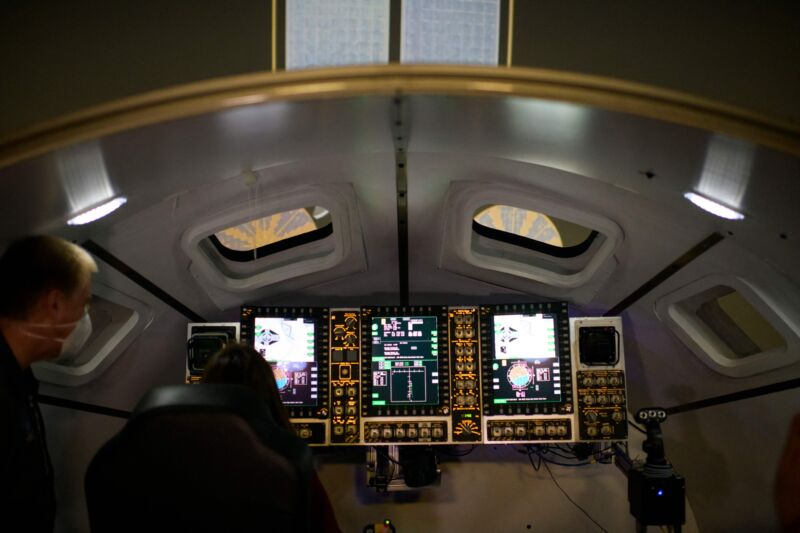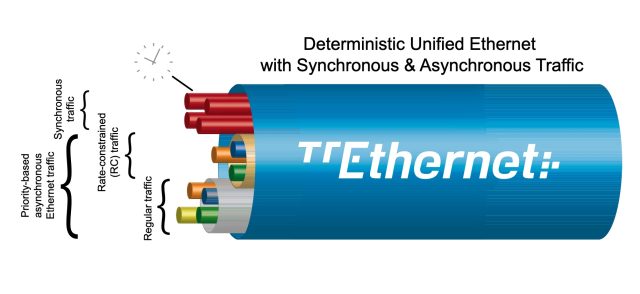
Enlarge / People look inside an Orion spacecraft simulator, which is used to train for docking to the Gateway space station, at the Johnson Space Center's System Engineering Simulator facility in Houston. (credit: Getty Images)
Wednesday's scheduled launch by NASA of the Artemis I mission will be the first integrated test of the agency’s SLS rocket and Orion spacecraft, which have been in development for 16 years and are expected to usher in a new era of space exploration. The uncrewed mission will also be only the second time a network standard known as time-triggered Ethernet has been taken into space, with the first being Orion's orbital test flight in 2014.
Time-triggered Ethernet (TTE) is an example of a mixed-criticality network, which is capable of routing traffic with differing levels of timing and different fault tolerance requirements over the same set of hardware. Until now, spacecraft generally relied on one network to transmit safety-critical or mission-critical messages and one or more completely segregated ones for carrying video conferencing and other types of less-critical traffic.

Illustration of how time-triggered Ethernet works. (credit: TTTech)
Engineers built a better mousetrap. The mice defeat it anyway
Orion is the first spacecraft to rely on a TTE network to route mixed-criticality traffic, whether, NASA says, it's for vital systems like navigation and life support, file transfers that are critical for delivery but not timing, or non-critical tasks such as crew videoconferencing. TTE—which will also be used in NASA’s Lunar Gateway space station and the ESA’s Ariane 6 launcher—is crucial for reducing the size, weight, cost, and power requirements of modern spacecraft.
No comments:
Post a Comment